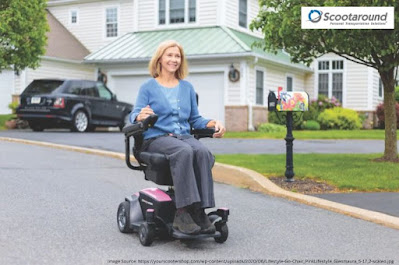Innovations on Wheels: The Latest Features in Electric Wheelchair Technology
Introduction
Electric wheelchairs have revolutionized mobility and independence for individuals with mobility limitations. Over the years, advancements in technology have led to remarkable innovations in electric wheelchair design, functionality, and features. In this blog post, we will explore the latest advancements in electric wheelchair technology, highlighting the cutting-edge features that are transforming the lives of users. Whether you are considering an upgrade or simply curious about the possibilities, this article will provide valuable insights into the exciting world of electric wheelchair innovation.
Lightweight and Compact Design
One notable advancement in electric wheelchair technology is the development of lightweight and compact designs. Manufacturers are using lightweight materials like aluminum and carbon fiber to create wheelchairs that are easy to maneuver, transport, and store. These lightweight models offer improved portability without compromising on stability and durability, making them ideal for both indoor and outdoor use.
Intelligent Control Systems
Modern electric wheelchairs feature intelligent control systems that enhance user experience and functionality. Advanced joystick controls allow for precise maneuverability, making it easier to navigate tight spaces and crowded areas. Some models also offer customizable programming options, allowing users to fine-tune the sensitivity and responsiveness of the controls to their specific needs.
Power and Battery Technology
Battery technology has undergone significant advancements, providing power wheelchairs with longer operating times and faster charging capabilities. Lithium-ion batteries have become the industry standard due to their higher energy density, lightweight construction, and longer lifespan. Additionally, some electric wheelchairs now offer quick-swappable battery systems, allowing users to easily exchange batteries for extended use without interrupting their mobility.
Enhanced Suspension and Terrain Adaptability
Electric wheelchairs are no longer limited to smooth surfaces. Manufacturers are incorporating advanced suspension systems and robust tires to improve ride comfort and expand terrain adaptability. From uneven surfaces and gravel paths to inclines and rough terrains, these innovations allow users to confidently navigate various environments and enjoy outdoor adventures with ease.
Seating and Posture Support
Comfort and proper posture are essential for prolonged wheelchair use. Electric wheelchairs now come with a range of seating options and customizable features to ensure optimal comfort and support. Adjustable seat heights, backrest angles, and cushioning materials are some of the innovations that promote better posture, reduce pressure sores, and enhance overall user comfort.
Assistive Technology Integration
Electric wheelchairs are becoming increasingly compatible with assistive technologies, opening up new possibilities for users. Integration with smartphones, tablets, and smart home systems allows for seamless control, communication, and accessibility. Users can access environmental controls, communicate with caregivers, or control their motorized wheelchair through voice commands or mobile apps, offering greater independence and connectivity.
Advanced Safety Features
Safety is paramount in electric wheelchair design, and modern models are equipped with advanced safety features to protect users. Anti-tip mechanisms, obstacle detection sensors, and automatic braking systems are just a few examples of the safety innovations incorporated into electric wheelchairs. These features provide users with a greater sense of security and reduce the risk of accidents or injuries.
Connectivity and Remote Monitoring
Some electric wheelchairs now offer connectivity options that allow remote monitoring and diagnostics. This feature enables users and caregivers to monitor battery life, track usage patterns, and receive alerts for maintenance or service needs. Remote monitoring enhances safety, simplifies maintenance, and ensures optimal performance of the wheelchair.
Customization and Personalization
Personalization options have become a key aspect of electric wheelchair design. Manufacturers are offering a range of customization choices, including color options, upholstery materials, and accessory compatibility. Users can tailor their electric wheelchairs to suit their individual style, preferences, and specific mobility needs.
Integration of Artificial Intelligence (AI)
As technology continues to advance, the integration of artificial intelligence (AI) into electric wheelchairs shows promise for the future. AI algorithms can analyze user behavior, predict movement patterns, and adjust wheelchair settings accordingly. This technology has the potential to enhance user safety, optimize energy efficiency, and further improve the overall user experience.
Conclusion
The rapid advancements in electric wheelchair technology have brought forth a new era of mobility, independence, and convenience for individuals with mobility limitations. From lightweight designs and intelligent control systems to enhanced safety features and AI integration, electric wheelchairs have become sophisticated and versatile mobility aids. The latest innovations offer improved maneuverability, extended battery life, increased terrain adaptability, and customizable options, making them better suited to meet the unique needs and preferences of users. As technology continues to evolve, we can expect electric wheelchairs to become even more advanced, empowering individuals to live their lives to the fullest and enjoy a greater sense of freedom and mobility.


.jpg)

Comments
Post a Comment